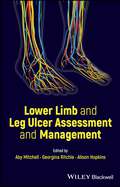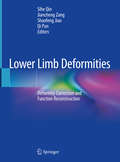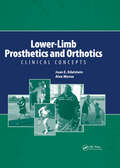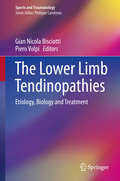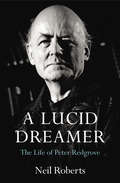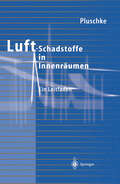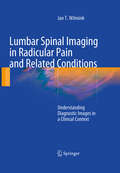- Table View
- List View
Lower gastrointestinal tract (UEB contracted)
by RnibThis image shows a cross section through the abdomen shown from the front. There is a locator dot shown, which will be at the top left of the page when the image is the correct way up. The abdomen and lower chest area are shown. Only parts of the arms and legs are shown. In the top centre of the page the duodenum (small intestine) starts at the pyloric sphincter where it would join the stomach, which is not shown. It curves down left then curves up behind the transverse colon (and the stomach if it were shown) before coming sharply down into the lower abdomen. In the centre of the image the small intestine wiggles down the page, then right, then down and left. In reality there are many more curves and layers of small intestine (it is over five metres long). In the bottom left of the abdomen the small bowel joins the large bowel. Just below this junction is the very small appendix. The ascending colon goes up the page from here, and half way up the abdomen it turns right at ninety degrees. This is now the transverse colon which goes horizontally across to the other side of the abdomen. Here it turns right at ninety degrees again and goes down the page as the descending colon. It curves to the left as the sigmoid colon and then straightens vertically forming the rectum ending in the anus.
Lower gastrointestinal tract (UEB uncontracted)
by RnibThis image shows a cross section through the abdomen shown from the front. There is a locator dot shown, which will be at the top left of the page when the image is the correct way up. The abdomen and lower chest area are shown. Only parts of the arms and legs are shown. In the top centre of the page the duodenum (small intestine) starts at the pyloric sphincter where it would join the stomach, which is not shown. It curves down left then curves up behind the transverse colon (and the stomach if it were shown) before coming sharply down into the lower abdomen. In the centre of the image the small intestine wiggles down the page, then right, then down and left. In reality there are many more curves and layers of small intestine (it is over five metres long). In the bottom left of the abdomen the small bowel joins the large bowel. Just below this junction is the very small appendix. The ascending colon goes up the page from here, and half way up the abdomen it turns right at ninety degrees. This is now the transverse colon which goes horizontally across to the other side of the abdomen. Here it turns right at ninety degrees again and goes down the page as the descending colon. It curves to the left as the sigmoid colon and then straightens vertically forming the rectum ending in the anus.
Lower Genital Tract Precancer: Colposcopy, Pathology and Treatment
by Albert Singer John M. Monaghan Swee Chong QuekThe new Second Edition of Lower Genital Tract Precancer has been extensively revised and expanded to provide a definitive and contemporary reference on this subject. Providing a comprehensive examination of the applications and benefits of modern diagnostic and therapeutic practices in managing lesions of the female lower genital tract, the book is presented in a clear, easy-to-read style and is extensively illustrated. The text covers investigative procedures and techniques, reviews the normal and abnormal cervix and fully appraises the diagnosis and management of both benign and malignant lesions. Vaginal, vulvular and perianal premalignant diseases are discused, and a separate section is devoted to those conditions which mimic, and can thus be confused with, precancer. A new section on AIDS has been included and an entire chapter on pathology is also incorporated.
Lower Genitourinary Radiology: Imaging and Intervention
by P. L. ChoykeUnique in its comprehensive presentation of both the latest diagnostic and therapeutic radiological techniques, this high-level, clinical text covers virtually all disorders requiring imaging of the male and female genitourinary tract. Major sections cover the bladder; prostate; testis and scrotum; urethra; penis; vagina; infertility; and interventional procedures. As such, it is an essential reference for practising radiologists and urologists.
Lower Limb and Leg Ulcer Assessment and Management
by Aby Mitchell Georgina Ritchie Alison HopkinsLower Limb and Leg Ulcer Assessment and Management Lower Limb and Leg Ulcer Assessment and Management is an indispensable resource for practitioners in primary and secondary care, offering a practical and accessible guide to treating and managing leg ulcers. This comprehensive text challenges the misconception that leg ulcers are invariably ‘chronic’. In practice, proactive management will prevent the harm associated with sub-optimal management. Insights are provided into lower limb assessment, early intervention for ulcer prevention, ulcer types and their causes, along with the influence that swelling and biomechanical changes have on the lower limb. The authors draw on international best practice guidance on lymphoedema, wound pain, wound bed preparation, compression therapy, psychological impact, and evidence-based care to enhance leg ulcer management. Each chapter aims to facilitate reader comprehension and promote productive patient discussions, empowering healthcare professionals to collaborate with patients and improve leg ulcer management rapidly and effectively. This multi-disciplinary resource covers: Normal venous, arterial, and lymphatic function in the lower leg Leg ulceration due to venous hypertension, peripheral arterial disease, and lymphoedema Leg ulcers of unusual aetiology, addressing autoimmune and inflammatory disorders such as pyoderma gangrenosum, rheumatoid arthritis, scleroderma, sickle cell, and more Musculoskeletal changes in the lower limb, assessment, and management to enhance mobility and calf-muscle function Clinical management, with topics like wound management, stages of wound healing, exudate management, holistic assessment including vascular assessment, compression therapy, and Laplace’s law Pain management with an emphasis on understanding the complexities and features that exacerbate or diminish the pain response The personalisation of care, understanding of social determinants of health, and the role of supportive self-management in lifelong management For professionals seeking evidence-informed approaches to delivering exceptional care, Lower Limb and Leg Ulcer Assessment and Management is an essential companion on the journey to understanding and managing leg ulcers effectively.
Lower Limb and Leg Ulcer Assessment and Management
by Aby Mitchell Georgina Ritchie Alison HopkinsLower Limb and Leg Ulcer Assessment and Management Lower Limb and Leg Ulcer Assessment and Management is an indispensable resource for practitioners in primary and secondary care, offering a practical and accessible guide to treating and managing leg ulcers. This comprehensive text challenges the misconception that leg ulcers are invariably ‘chronic’. In practice, proactive management will prevent the harm associated with sub-optimal management. Insights are provided into lower limb assessment, early intervention for ulcer prevention, ulcer types and their causes, along with the influence that swelling and biomechanical changes have on the lower limb. The authors draw on international best practice guidance on lymphoedema, wound pain, wound bed preparation, compression therapy, psychological impact, and evidence-based care to enhance leg ulcer management. Each chapter aims to facilitate reader comprehension and promote productive patient discussions, empowering healthcare professionals to collaborate with patients and improve leg ulcer management rapidly and effectively. This multi-disciplinary resource covers: Normal venous, arterial, and lymphatic function in the lower leg Leg ulceration due to venous hypertension, peripheral arterial disease, and lymphoedema Leg ulcers of unusual aetiology, addressing autoimmune and inflammatory disorders such as pyoderma gangrenosum, rheumatoid arthritis, scleroderma, sickle cell, and more Musculoskeletal changes in the lower limb, assessment, and management to enhance mobility and calf-muscle function Clinical management, with topics like wound management, stages of wound healing, exudate management, holistic assessment including vascular assessment, compression therapy, and Laplace’s law Pain management with an emphasis on understanding the complexities and features that exacerbate or diminish the pain response The personalisation of care, understanding of social determinants of health, and the role of supportive self-management in lifelong management For professionals seeking evidence-informed approaches to delivering exceptional care, Lower Limb and Leg Ulcer Assessment and Management is an essential companion on the journey to understanding and managing leg ulcers effectively.
Lower Limb Deformities: Deformity Correction and Function Reconstruction
by Sihe Qin Jiancheng Zang Shaofeng Jiao Qi PanThe diagnosis and treatment described in this book is based on the combination of Ilizarov technique, Paley’s principle and Qinsihe Natural Reconstruction theory. It covers all kinds of lower limb deformities, ranging from congenital deformities to acquired deformities, the sequelae of Poliomyelitis, Cerebral Palsy, Spina Bifida Sequelae, Traumatic Sequelae, Charcot-Marie-Tooth disease, Osteogenesis Imperfecta and Congenital Pseudarthrosis Tibia, etc. There are also lots of clinical tips and tricks such as how to reduce radiation exposure during orthopaedic surgeries, how to correct multiple limb deformities in one stage, how to balance the dynamic muscle in complex foot and ankle deformities, and how to successfully accomplish the surgery of difficult lower limb reconstruction without allogeneic blood transfusion, etc.It is a valuable reference for orthopaedic surgeons and advanced trainees worldwide who interested in deformity correction and limb reconstruction.
Lower-Limb Prosthetics and Orthotics: Clinical Concepts
by Joan Edelstein Akex MorozLower-Limb Prosthetics and Orthotics: Clinical Conceptsis a comprehensive overview of lower-limb prosthetics and orthotics, covering normal and pathological gait, lower-limb biomechanics, clinical applications, as well as prosthetic and orthotic designs and components. Joan Edelstein and Alex Moroz have writtenLower-Limb Prosthetics and Orthotics with the clinician’s perspective in mind. Clinical management is incorporated throughout the text, including basic surgical concepts, postoperative management, preprosthetic care, and training in the use of devices. Additionally, this text incorporates unique features relevant to physicians such as prescription writing and prosthetic and orthotic construction and modification, as well as, the latest research regarding energy consumption and long-term utilization of prostheses.Chapters Include: Orthotics in neuromuscular diseases Orthotics in pediatrics Functional expectations Gait and activities training Transtibial and transfemoral prostheses and components Transtibial and transfemoral biomechanics, evaluation, and gait analysis Disarticulations and Bilateral Amputations With over 150 line drawings and photographs to supplement the text, Lower-Limb Prosthetics and Orthotics: Clinical Concepts is ideal for clinicians in the fields of physical medicine and rehabilitation, orthopedics, vascular surgery, physical therapy and occupational therapy.
Lower-Limb Prosthetics and Orthotics: Clinical Concepts
by Joan Edelstein Akex MorozLower-Limb Prosthetics and Orthotics: Clinical Conceptsis a comprehensive overview of lower-limb prosthetics and orthotics, covering normal and pathological gait, lower-limb biomechanics, clinical applications, as well as prosthetic and orthotic designs and components. Joan Edelstein and Alex Moroz have writtenLower-Limb Prosthetics and Orthotics with the clinician’s perspective in mind. Clinical management is incorporated throughout the text, including basic surgical concepts, postoperative management, preprosthetic care, and training in the use of devices. Additionally, this text incorporates unique features relevant to physicians such as prescription writing and prosthetic and orthotic construction and modification, as well as, the latest research regarding energy consumption and long-term utilization of prostheses.Chapters Include: Orthotics in neuromuscular diseases Orthotics in pediatrics Functional expectations Gait and activities training Transtibial and transfemoral prostheses and components Transtibial and transfemoral biomechanics, evaluation, and gait analysis Disarticulations and Bilateral Amputations With over 150 line drawings and photographs to supplement the text, Lower-Limb Prosthetics and Orthotics: Clinical Concepts is ideal for clinicians in the fields of physical medicine and rehabilitation, orthopedics, vascular surgery, physical therapy and occupational therapy.
The Lower Limb Tendinopathies: Etiology, Biology and Treatment (Sports and Traumatology)
by Giannicola Bisciotti Piero VolpiThis book examines the subject of lower limb tendinopathy and is divided into two main parts: the first covers the general aspects of tendinopathy, while the second focuses on the specific condition in the lower limb. Each chapter has a clear structure: etiopathogenesis, clinical presentation, imaging, conservative and surgical treatment, and therapeutic indications, making it easy to read. Furthermore, the section on conservative treatment includes important practical application tools.
Lower Urinary Tract Symptoms in Adults: A Clinical Approach
by Marcus Drake Andrea Cocci Ricardo Pereira e SilvaThis book provides an in-depth insight into the symptoms and symptom complexes affecting the lower urinary tract and the underlying causative conditions. The emphasis throughout is practical and clinical, with coverage of all levels of the patient pathway. In addition to the extensive guidance on diagnostic assessment and interpretation, the management of voiding and storage lower urinary tract symptoms, including incontinence, is fully described and potential complications and neurological conditions are discussed. Information is also included on relevant basic science and epidemiology. Lower Urinary Tract Symptoms in Adults: A Clinical Approach will be an ideal source of expert knowledge for practitioners in functional urology, urogynecology, and neuro-urology gerontology. .
LPN to RN Transitions - E-Book
by Lora ClaywellLPN to RN Transitions, 3rd Edition makes it easy for to take the next step in your nursing career with all of the essential information you need to pursue your RN degree and practice as a registered nurse. This new edition includes practical information on classroom study habits, professional writing, knowledge and skills acquisition, and more. Plus, newly-revised chapters provide the latest information for one complete, indispensable resource to help you succeed in everything from the classroom to clinical practice!Clear, succinct coverage focuses your attention on the issues that an RN must address for a successful practice. Critical thinking questions gives you practice applying the critical-thinking skills you will need on the job.FYI boxes encourage you to think about how your day-to-day interactions will change as an RN.Key terms at the beginning of each chapter help you master vocabulary words central to the topic discussed.Learning objectives in each chapter touch on the broad range of topics that will be emphasized in the RN curriculum.NEW! Passing NCLEX chapter provides strategies to help you succeed on the NCLEX-RN exam.Case studies in each chapter demonstrate how the concepts discussed apply to real-life patients and colleagues.Summary content presented in a bulleted-list format offers a quick chapter-review for test preparation.Two-color text creates a more engaging reading experience.Revised table of contents helps you quickly locate information.Improved organization in each chapter gives you a clear picture of what the profession of nursing encompasses and ends with a career-affirming review of the path you must travel to become a registered nurse.Casual writing style makes it easier to read the text and gain practical advice.
LPN to RN Transitions - E-Book
by Lora ClaywellLPN to RN Transitions, 4th Edition makes it easy for you to take the next step in your nursing career with all of the essential information you need to pursue your RN degree and practice as a registered nurse. This new edition includes practical information on role transition, cultural competency, delegation, classroom study habits, professional writing, and more. Plus, newly-revised chapters provide the latest information for one complete, indispensable resource to help you succeed in everything from the classroom to clinical practice!Improved organization gives you a clear vision of what the profession of nursing encompasses and ends with a career-affirming review of the path you must travel to reach the goal of registered nurse.Critical thinking questions give you practice applying the critical-thinking skills you will need on the job.Clear, succinct coverage helps you focus on the issues that an RN must address for a successful practice.FYI boxes encourage you to think about how your day-to-day interactions will change as an RN.Additional illustrations create a more engaging reading experience.Revised table of contents helps you quickly locate information.Casual writing style makes it easier to read the text and gain practical advice.Key Terms and Key Points help you learn vocabulary words central to the topic discussed.Learning objectives in each chapter orient you to the broad range of topics that will be emphasized in the RN curriculum. NEW! Information on Role Transition prepares you to begin working in a clinical practice environment.NEW! Cultural Competency information covers how to work with a diverse set of patients. NEW! Prepare Now to Pass NCLEX® chapter provides strategies to use throughout the ADN curriculum to help you prepare a study plan tailored for success on the NCLEX-RN exam.NEW! Additional case studies demonstrate how the concepts discussed apply to real-life patients and colleagues. NEW! Math and Calculations content streamlined online for quick access.
LPN to RN Transitions - E-Book: LPN to RN Transitions - E-Book
by Lora ClaywellLPN to RN Transitions, 5th Edition makes it easy for you to advance in your nursing career with all of the essential information you need to pursue your RN degree and practice as a registered nurse. This new edition includes practical information on role transition, cultural competency, delegation, interprofessional collaboration, professional writing, and more. Plus, newly revised and updated chapters provide the latest information for one complete, indispensable resource to help you succeed in everything from the classroom to clinical practice! Clear, succinct coverage helps you understand the issues that an RN must address for a successful practice. Respect for the accomplishments of the LPN is emphasized throughout the text. Engaging design and thoughtful exercises keep you focused on key concepts and learning objectives. Critical thinking questions at the end of every chapter reinforce your understanding of important content. Patient scenarios and Application to Practice boxes challenge you to apply your knowledge to real-world clinical situations. FYI boxes encourage you to think about how your day-to-day interactions will change as an RN. Key Terms and Key Points help you learn vocabulary words and concepts related to the topic being discussed. NEW! Interprofessional collaboration coverage prepares you to work effectively with other members of the healthcare team. NEW! Information on trauma-Informed care prepares you to deliver care with a person-centered approach, which promotes a collaborative, trusting, respectful, and emotionally supportive care environment. NEW! Coverage of competencies for the RN gives you a clear vision of what skills registered nursing encompasses and how they differ from practical or vocational nursing. UPDATED! Next Generation NCLEX®-style content prepares you for the upcoming changes to the NCLEX-RN® exam. EXPANDED! Additional information on key topics enhances coverage of time management, preparing for class, self-care, prioritization, outcomes and cost containment, mandatory reporting, and case management for chronic illness across all settings, including home care.
A Lucid Dreamer: The Life of Peter Redgrove
by Dr Neil Roberts Peter RedgroveThe work of the poet Peter Redgrove is one of the great unexplored treasures of late twentieth century literature. His prolific output presents an intriguing variety of personae: magician, scientist, lover, psychologist, joker, madman. It is only now, with the publication of his Collected Poems and this biography, that we can see how and why these personae developed - and discover the full depth and range of this visionary writer.Born into an apparently conventional middle-class family that was in reality deeply disturbed, the poet finally emerged: transforming himself from the neurotic, Oedipal young scientist, through a process of mental breakdown, insulin coma therapy, erotic revelation and the discovery of poetic companionship at Cambridge - and particularly his friendship and rivalry with Ted Hughes.Neil Roberts explores the inner story of this emergence, and Redgrove's later development through marriage, family life, the fellowship of the 'Group', alcoholic excess, infidelity and marital breakdown to his triumphant later partnership with Penelope Shuttle. We also discover, for the first time, some darker secrets: his fascination with Aleister Crowley, his damaged and damaging relationship with his father, and the lifelong sexual fetish which he called the 'Game'. Drawing on the poet's intimate journals and correspondence, and interviews with family, friends and colleagues, A Lucid Dreamer tells the exceptionally inward and revealing story of an astonishing creative life.
Luft und Gesundheit: Von der globalen Zirkulation bis zu Atemwegserkrankungen
by Christian RügerIst frische Luft ein Mythos? In diesem Werk durchstreift der Autor die Lebensräume des Menschen und bietet Einblicke in die jeweils anzutreffenden Luftqualitäten. Aerosole steigen nicht von allein in die Luft auf. Die Partikel lösen sich aus dem festen oder flüssigen Verband. In der Luft kommen alle flugfähigen Masseteilchen miteinander in Kontakt – als ein anschauliches Beispiel dient dem Leser die Entstehung von Wassertropfen. Jede Luftschicht der Atmosphäre wirkt unterschiedlich auf die Atemluft ein und der Wind spielt dabei seine ganz eigene Rolle. Einerseits ist er Verteiler von Schadstoffen, und andererseits Garant frischer Luft am Erdboden. Die Verschmutzung der Luft ruft den Gesetzgeber auf den Plan. Wir erleben derzeit eine rasante Entwicklung von der Aufhebung der Zünfte bis zur Klimadiskussion.Große Relevanz für die Gesundheit besitzt die Schnittstelle zwischen Luft und Mensch: die Atemwege. Deren Schleimhäute stehen im Zentrum unserer Immunabwehr, und müssen einen „Etagenwechsel“ von Infektionen der oberen Atemwege in untere Lungenabschnitte verhindern. Diese und viele weitere spannende Zusammenhänge und Themen im breiten Spektrum zwischen Meteorologie und Atemwegserkrankungen werden anschaulich, gut zugänglich und anhand praktischer Beispiele abgehandelt, um sich eine sichere Plattform zur Beurteilung der Flut von Umweltnachrichten zu schaffen.
Luftschadstoffe in Innenräumen: Ein Leitfaden
by Peter PluschkeAktuelle StandortbestimmungLuftschadstoffe in Wohnräumen sind immer häufiger Auslöser von Allergien, Kopfschmerzen, Schleimhautreizungen und Befindlichkeitsstörungen. Wer diese heimlichen "Frischluftkiller" gezielt bekämpfen will, braucht umfassende Kenntnisse über Art, Herkunft und Verbreitung dieser Stoffe.Das Buch bringt frischen Wind in die Praxis der Schadstoffbekämfung. Peter Pluschke hat das Fachwissen aller beteiligten Disziplinen zusammengeführt und auf der Basis der neusten Forschungsergebnisse einen anwendungsorientierten Leitfaden konzipiert.Klare OrientierungLeicht lesbar, mit nur wenigen Formeln und ohne Vertiefung spezieller chemischer, physikalischer und bautechnischer Details werden die wichtigsten Luftschadstoffe in Innenräumen beschrieben:- ihre typischen Quellen und deren Emissionsverhalten,- toxikologische Informationen,- Grundsätze für die Bewertung der Schadstoffe,- Hinweise zur Sanierung,- Methoden zur Erkundung der Schadstoffbelastung in Gebäuden.Praktische ProblemlösungNeben Art, Herkunft und Verbreitung der wichtigsten Luftschadstoffe in Innenräumen stehen praktische Konzepte zur Vermeidung, Minderung und Sanierung der Schadstoffbelastung im Mittelpunkt.Praktiker und Fachleute finden in dem Buch schnell und übersichtlich konkrete Handlungsanweisungen und kompetente Ratschläge für die praktische Bewältigung der Schadstoffproblematik in Innenräumen.
L'ultima creatività: Luci nella vecchiaia
by Carlo Cristini Marcello Cesa-Bianchi Giovanni Cesa-Bianchi Alessandro PorroIl volume si pone l’obiettivo di scoprire, affrontare e analizzare un tema, l’ultima creatività, che la psicologia, le neuroscienze e la medicina non hanno mai pienamente esaminato. L’ultima creatività rappresenta la forza dello spirito innovativo, la tendenza a cogliere quanto l’esistenza propone, fino al termine: verso la conclusione della vita può mantenersi attiva la fantasia, non nel significato di evasione allegorica da una realtà che talora appare avversa, ma in quello di ricerca della verità narrativa e della sua realizzazione. Questo argomento può suscitare e incontrare interesse o curiosità presso studenti, ricercatori, professionisti della salute e tutti coloro che riconoscono nello svolgersi della vecchiaia un’opportunità di apprendimento, crescita e riscoperta di qualità e risorse. Il testo si colloca in uno spazio nuovo della ricerca sulla creatività, approfondendone il ruolo e il significato più profondo e forse anche quello più vero.
Lumbaler Bandscheibenvorfall: Konservative und Operative Behandlung
by Kurt-A. Jochheim Friedrich Loew August RüttLumbar Disc Adult Hydrocephalus: Proceedings of the 27th Annual Meeting of the Deutsche Gesellschaft für Neurochirurgie, Berlin, September 12-15, 1976 (Advances in Neurosurgery #4)
by R. Wüllenweber, M. Brock, J. Hamer, M. Klinger and O. SpoerriLumbar Disc Herniation
by Franco PostacchiniThis most complete monograph so far published on the subject analyses all aspects related to the etiopathogenesis, pathomorphology, diagnosis and treatment of lumbar disc herniation. Five chapters are dedicated to biological and pathomorphologic aspects, while five deal with the clinical presentation and diagnostic tests in both extreme depth and breadth. Much space is devoted to conservative, percutaneous and surgical treatments, as well as the causes and management of failed back syndrome.
Lumbar Fusion and Stabilization
by Kazuo Yonenobu, Keiro Ono and Yoshiharu TakemitsuLumbar spine or back pain is one of the most important problems in orthopedics and neurosurgery today. Two key ways of treating this malady, lumbar fusion and stabilization, are critically discussed in the forty-three papers in this volume. They represent the best of the contributions to the 5th ICLFS, carefully selected and edited to give a good overview of recent knowledge and the state of the art.
Lumbar Interbody Fusions E-Book
by Sunil V Manjila Thomas Mroz Michael P SteinmetzAuthored by experienced surgeons and key innovators in the fast-moving field of LIF surgery, Lumbar Interbody Fusions provides an in-depth, focused approach to recent advances in surgical techniques and technology. Covering both minimally invasive and open procedures, this comprehensive reference provides step-by-step details for proven techniques, including extreme lateral, oblique lateral, and direct lateral approaches; intertransverse approaches; axial approaches; and endoscopic approaches.Focuses on the technical nuances, pearls and pitfalls of each procedure, as well as complication avoidance and management.Features high-quality radiographs and intraoperative images for superb visual guidance throughout.Covers topics that have as-yet unsettled surgical management, such as thoracolumbar and lumbosacral overlap diseases. Includes a concise review of evidence-based spine literature at the end of each procedural chapter. Features chapters on adjunct instrumentation such as pedicle screw and facet fixation, as well as graft selection and revision surgeries.
Lumbar Spinal Imaging in Radicular Pain and Related Conditions: Understanding Diagnostic Images in a Clinical Context
by J.T. WilminkA general consensus exists,that lumbosacral nerve root compression is the primary cause of sciatica and neurogenic claudication, although humoral and vascular factors certainly play a role as well. This book focuses on imaging the various ways in which nerve root compression can come about, and determining which anatomic features are reliably associated with the production of radicular pain. After a discussion of the nature of radicular pain and related symptoms, spinal imaging techniques and options are reviewed, with emphasis on the role of MR myelography in assessing the intradural nerve roots. A chapter on normal topographic, sectional, and functional radiologic anatomy is followed by presentations on pathologic anatomy, addressing mechanisms of nerve root compression, and on pre- and postoperative imaging. Features relevant to prediction of the natural history are discussed, and a section is devoted to the performance and reporting of a spinal imaging study.
The Lumbar Spine: An Atlas of Normal Anatomy and the Morbid Anatomy of Ageing and Injury
by James TaylorThis exceptional book is a collection of more than 140 anatomical images documenting the development, maturation and ageing of the lumbar spine and pathologies associated with ageing and injury. It provides a unique guide to support the clinical diagnosis of lumbar spine trauma and pain due to age and injury. The collection represents the extensive research conducted by Professor James Taylor into the lumbar spine gathered from his study of 266 autopsies over almost a decade. It complements The Cervical Spine: An atlas of normal anatomy and the morbid anatomy of ageing and injuries, based on the same collection. With legislative changes now making collection of such work impossible in Australia, this book makes a never-to-be-repeated contribution to the understanding of spinal injury and rehabilitation globally, and will be invaluable for patient assessment, diagnosis and treatment. Unique, high-quality images document age-related and injury-induced changes to the lumbar spine Combination of wet specimens and stained specimens Includes many soft-tissue specimens Unprecedented breadth and diversity in range of injuries covered Logical sequence from normal anatomy, through to age-related changes and changes resulting from injury Invaluable for students of physiotherapy, chiropractic and osteopathy An eBook included in all print purchases



